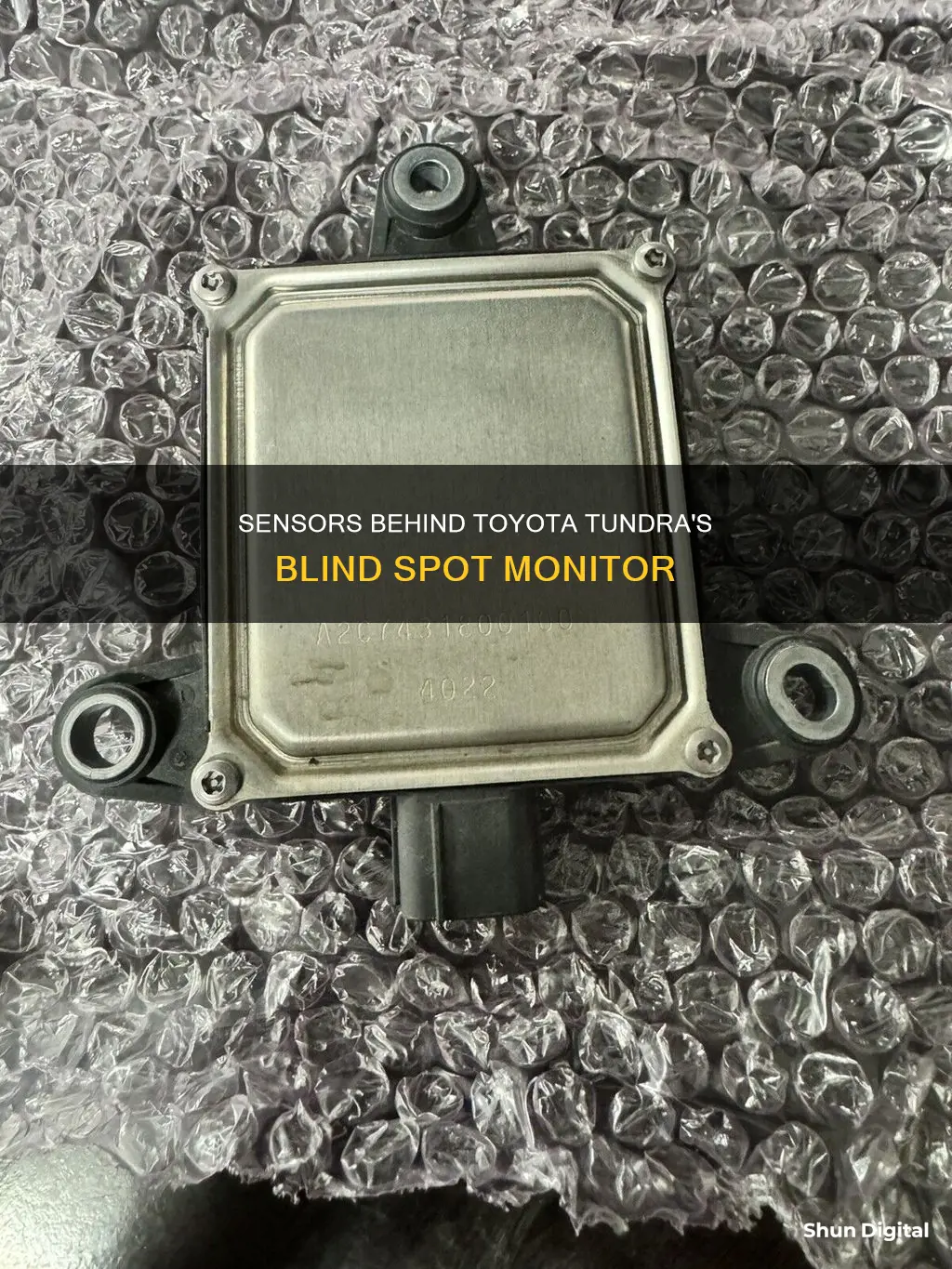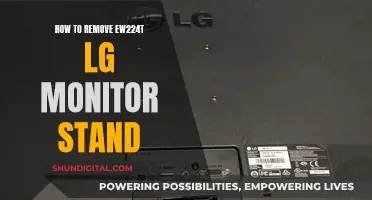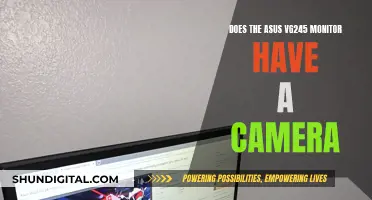
The Toyota Tundra's Blind Spot Monitor (BSM) is a system that has two functions: the Blind Spot Monitor function, which assists the driver when changing lanes, and the Rear Cross Traffic Alert function, which assists the driver when backing up. These functions use the same sensors, which are located on the inside left and right of the rear bumper. The BSM function uses radar sensors to detect vehicles in adjacent lanes in the driver's blind spot and alerts the driver via an indicator on the outside rearview mirror. The RCTA function, on the other hand, detects vehicles approaching from the right or left rear of the vehicle and alerts the driver through flashing indicators and a buzzer. While the BSM system is designed to improve safety, drivers should not overly rely on it as it cannot judge if it is safe to change lanes.
| Characteristics | Values |
|---|---|
| Purpose | Warns the driver when a vehicle in the next lane enters the blind spot on either side of the vehicle |
| Function | Assists the driver in making the decision when changing lanes and when backing up |
| Sensor location | Inside left and right of the rear bumper |
| Sensor type | Radar |
| Indicator type | Visual and audio |
| Detection range | Approximately 11.5 ft. (3.5 m) from the side of the vehicle; approximately 9.8 ft. (3 m) from the rear bumper; approximately 3.3 ft. (1 m) forward of the rear bumper |
| Conditions for operation | Vehicle speed greater than approximately 25 mph (40 km/h) |
| Conditions for detection | A vehicle in an adjacent lane overtakes the vehicle; another vehicle enters the detection area when it changes lanes; you overtake a vehicle in the adjacent lane |
| Conditions for non-detection | Small motorcycles, bicycles, pedestrians, etc.; vehicles travelling in the opposite direction; guardrails, walls, signs, parked vehicles and similar stationary objects; following vehicles that are in the same lane; vehicles driving 2 lanes across from your vehicle; vehicles which are being overtaken rapidly by your vehicle |
| Conditions for malfunction | During bad weather; when ice or mud is attached to the rear bumper; when driving on a wet road surface; when there is a significant difference in speed between your vehicle and the vehicle that enters the detection area; when driving up or down consecutive steep inclines; when multiple vehicles approach with only a small gap between each vehicle; when vehicle lanes are wide and the vehicle in the next lane is too far away from your vehicle; when the vehicle that enters the detection area is travelling at about the same speed as your vehicle; when towing anything such as a trailer or boat; when there is a significant difference in height between your vehicle and the vehicle that enters the detection area; directly after the function is set to on; when towing a trailer; when items such as a bicycle carrier are installed on the rear of the vehicle |
What You'll Learn

The Toyota Tundra blind spot monitor sensor location
The Toyota Tundra's Blind Spot Monitor (BSM) is a system designed to warn the driver when a vehicle in the next lane enters their blind spot. The BSM system uses radar sensors to detect vehicles in the blind spot and alerts the driver through indicators on the outside rear-view mirror.
The Blind Spot Monitor sensors on the Toyota Tundra are located on the inside left and right of the rear bumper. These sensors can sometimes get covered with dust, dirt, spider webs, or other obstructions, which can trigger a "Check Blind Spot Monitor System" error. To restore proper operation, you can clean any mud or debris away from the sensors and then turn off the vehicle ignition for a few seconds before turning it back on to re-calibrate the sensors.
It is important to keep the sensors and the surrounding area on the bumper clean at all times. Additionally, do not subject the sensors or the surrounding area to strong impact, as this can cause the sensors to move slightly and lead to a malfunction. If the sensors or the surrounding area are subjected to a strong impact, it is recommended to have the area inspected by a Toyota dealer.
The BSM function is operational when the following conditions are met:
- The BSM function is set to "on".
- The vehicle speed is greater than approximately 25 mph (40 km/h).
The BSM function will detect a vehicle in the following scenarios:
- When a vehicle in an adjacent lane overtakes the Tundra.
- When another vehicle enters the detection area while changing lanes.
- When the Tundra overtakes a vehicle in the adjacent lane.
It is important to note that the BSM function is not designed to detect small motorcycles, bicycles, pedestrians, vehicles travelling in the opposite direction, guardrails, walls, signs, parked vehicles, or similar stationary objects. Additionally, there are certain conditions under which the BSM function may not function correctly, such as during bad weather, when there is ice or mud on the rear bumper, or when driving on a wet road surface.
Best Places to Buy CRT Arcade Monitors
You may want to see also

How to clean the sensors
The Toyota Tundra's Blind Spot Monitor (BSM) is designed to warn you when a vehicle in the next lane enters your blind spot on either side of the vehicle. The sensors are located on the inside left and right of the rear bumper. They can sometimes get covered with dust, dirt, spider webs, or other obstructions, which can trigger the "Check Blind Spot Monitor System" error.
To clean the sensors, follow these steps:
Locate the sensors:
The sensors are located on the inside left and right of the rear bumper. They are usually mounted in the rear bumper, under the side mirrors, or behind the rear bumper.
Gather your cleaning supplies:
You will need a microfiber cloth and, if the sensors are particularly dirty, some mild soap or detergent and a soft-bristled brush.
Clean the sensors:
Use the microfiber cloth to gently wipe down the sensors, removing any dirt, dust, or debris. If the sensors are especially dirty, you can dampen the cloth with a small amount of water and mild soap or detergent. Avoid using any abrasive cleaning agents or brushes, as these may damage the sensors. Be careful not to apply too much pressure when wiping, as the sensors may be sensitive.
Dry the sensors:
Use a dry section of the microfiber cloth to gently absorb any moisture left on the sensors after cleaning. Ensure that the sensors are completely dry before proceeding.
Re-calibrate the sensors:
Once the sensors are clean and dry, turn off the vehicle ignition for a few seconds before turning it back on. This will help the sensors re-calibrate and ensure they are functioning properly.
Test the sensors:
After cleaning and re-calibrating, test the sensors by driving on a quiet road and observing whether the BSM warning indicator illuminates when a vehicle enters your blind spot. If the sensors are functioning correctly, the indicator should light up, and you may hear an audible alert.
By regularly cleaning and maintaining your Toyota Tundra's blind-spot monitor sensors, you can ensure their optimal performance and enhance your overall driving safety.
Monitor Your MacBook's CPU Usage: A Step-by-Step Guide
You may want to see also

The blind spot monitor function
- Approximately 11.5 ft (3.5 m) from the side of the vehicle. The first 1.6 ft (0.5 m) from the side of the vehicle is not in the detection area.
- Approximately 9.8 ft (3 m) from the rear bumper.
- Approximately 3.3 ft (1 m) forward of the rear bumper.
- The BSM function is set to on.
- The vehicle speed is greater than approximately 25 mph (40 km/h).
The system will detect a vehicle when:
- A vehicle in an adjacent lane overtakes the vehicle.
- Another vehicle enters the detection area when it changes lanes.
- You overtake a vehicle in the adjacent lane.
It is important to note that the Blind Spot Monitor function is not designed to detect certain types of vehicles and/or objects, including small motorcycles, bicycles, pedestrians, vehicles travelling in the opposite direction, guardrails, walls, signs, parked vehicles, and similar stationary objects. Additionally, there are conditions under which the function may not detect vehicles correctly or may unnecessarily detect vehicles and/or objects. These conditions include bad weather, ice or mud on the rear bumper, driving on a wet road surface, significant differences in speed or height between vehicles, consecutive steep inclines, and narrow vehicle lanes, among others.
G-Sync Compatibility with the ASUS VG248QE 3D Monitor
You may want to see also

The rear cross-traffic alert function
The Rear Cross Traffic Alert function of the Toyota Tundra's Blind Spot Monitor (BSM) is designed to assist the driver when reversing. This function uses the same sensors as the BSM, which are located inside the left and right sides of the rear bumper.
When the RCTA function is operational, it can detect vehicles approaching from the right or left rear of the vehicle. It then alerts the driver to the other vehicle's existence by flashing the outside rearview mirror indicators and sounding a buzzer. The buzzer volume can be adjusted to ensure it is audible over other noises, such as high audio volume.
The RCTA function is enabled when the following conditions are met:
- The RCTA function is set to 'on'.
- The shift lever is in reverse.
- The vehicle speed is less than approximately 5 mph (8 km/h).
- The approaching vehicle speed is between approximately 5 mph (8 km/h) and 18 mph (28 km/h).
It is important to note that the RCTA function is not designed to detect small motorcycles, bicycles, pedestrians, vehicles approaching from directly behind, or stationary objects such as guardrails, walls, signs, and parked vehicles. Additionally, the function may not work correctly in certain conditions, such as when there is ice or mud on the rear bumper, during bad weather, or when multiple vehicles are approaching continuously.
To ensure the proper functioning of the RCTA system, it is important to keep the sensors and the surrounding area on the bumper clean at all times. It is also recommended to avoid subjecting the sensors or the bumper to strong impacts, as this may cause the sensors to move off position and lead to a malfunction.
Removing FPS Counter: ASUS VG245H Monitor Guide
You may want to see also

How to install an aftermarket blind spot monitor
Installing an aftermarket blind spot monitor can be a complex process, and it's important to ensure that it is done correctly as it is a safety feature. You can choose to install it yourself or get professional help. Here is a step-by-step guide on how to install an aftermarket blind spot monitor:
Understand the System:
Before you begin, familiarize yourself with the blind spot monitor system and its components. The system typically includes sensors, an indicator, and sometimes a control box. The sensors can be radar, ultrasonic, or Lidar-based, and they are mounted on the side mirrors or rear bumper. The indicator provides visual and/or audible alerts to the driver.
Prepare the Vehicle:
Park your vehicle in a spacious area and turn off the engine. Gather all the necessary tools and components, including the sensors, indicator lights, control box (if applicable), double-sided stickers or brackets for mounting, a protractor, and any other included hardware.
Mount the Sensors:
Locate the correct positions for the sensors, usually on the rear of the vehicle, about 50-80 cm above the ground. Use the support cushion to find the punching position and mark it. Clamp the protractor to the sensor and adjust it so that the end of the protractor's corner is parallel to the vehicle wheel. Ensure the sensor angle matches the manufacturer's specifications. Secure the sensor in place using the provided hardware.
Connect the Wiring:
Connect the power supply wires to the vehicle's power source, typically the ACC 12V. Connect the grounding wire (usually black) to the negative pole or ground. Attach the sensor wires, indicator wires, and any other necessary connections as per the manual. Ensure that all connections are secure and correct, as improper wiring can lead to system malfunction.
Mount the Indicator Lights:
Place the indicator lights inside the cabin, preferably on the lower window pillar between the dashboard and side mirror. Use the double-sided stickers provided with the kit for a secure installation. Ensure that the lights are visible to the driver without obstructing their view of the road.
Test the System:
Once the installation is complete, start the engine and test the blind spot monitor system. Ensure that the sensors are detecting objects, and the indicator lights and alarms are functioning correctly. Adjust the volume of the buzzer if necessary. Refer to the manual for any specific testing procedures or additional steps.
Seek Professional Help if Needed:
If you encounter any issues during the installation or are unsure about any steps, it is recommended to seek assistance from a professional technician or the blind spot monitor system manufacturer. They can provide guidance or perform the installation for you, ensuring a correct and safe setup.
Aftermarket blind spot monitors are a valuable addition to your vehicle, enhancing your awareness and safety on the road. By following these steps and paying attention to the details, you can successfully install the system and improve your driving experience.
Easy Ways to Identify Your Monitor's Panel Model Number
You may want to see also
Frequently asked questions
The sensors are located on the inside left and right of the rear bumper.
The blind spot monitor system has two functions: it assists the driver when changing lanes and when backing up.
The system uses radar sensors to detect vehicles in the area not reflected in the side mirrors. When a vehicle is detected, the driver is alerted via an indicator on the side mirror.
If the blind spot monitor system is not working, it may be due to dirt or debris on the sensors. Clean any mud or debris away from the sensors and turn off the vehicle ignition for a few seconds before turning it back on to recalibrate the sensors.







